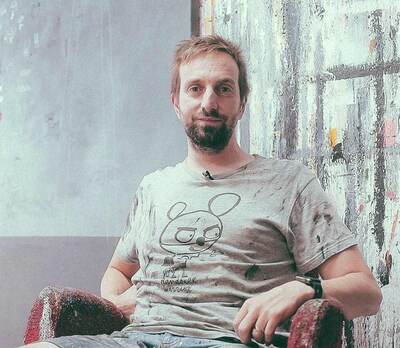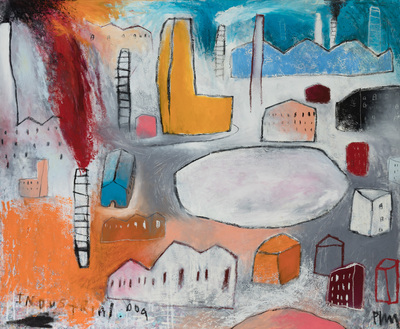Edgar Plans: the triumph of the artist with the soul of a child
On May 24, the artist from Gijón, who has managed to conquer the current art scene, arrives for the first time at our auction
Picasso claimed that learning to paint like Renaissance artists took only a few years while painting like children took a lifetime. The background of this mythical phrase by the painter from Malaga could well be applied to the singular vision that Edgar Plans prints in his plastic universe: rebelling against the annihilation of the spirit of childhood, the artist from Gijón has decided, as Picasso said, to do the most difficult : paint with the same freedom of a child.
When asked about his beginnings, Edgar Plans says that from a very young age he remembers himself painted on any piece of paper, wall or floor. His first contact with academic painting in the Carlos Roces workshop, to which his parents signed him up to accompany his sister, confirmed that this had little or nothing to do with the artistic concerns that boiled in his head. His thing was not to paint still lifes or plaster figures in charcoal, much less being told what he had to paint. In this sense, the legacy of his father, the writer and filmmaker Juan José Plans, had a lot to do with it, thanks to whom he was able to grow up surrounded by those endearing stories and crazy characters that make up that magic and fantasy on which Plans’ work feeds. since ever.
Since then, Plans has been developing a very personal style halfway between graffiti, pop, children’s illustration and comics, imprinting on them that rebellious spirit that warns of the trap that time imposes on us, forcing us to grow up. As if it were an antidote, Plans uses his own creativity to make his brushes sprout a world full of stories and characters that could well approach children’s illustrations, but far from any childishness, and despite his kind and innocent appearance , threaten a vindictive background where what really worries him dwells: ecology, violence, and rebellion against injustice and against all those other issues that he considers that concern those of us who inhabit the planet and want life to continue being that place we imagined when we were children.

In this aspect, the canvas that concerns us, whose title “industrial” already anticipates its critical content, evidences the plastic character that defines the artistic corpus of Plans. Under an aesthetic that drinks from graffiti as an experimental philosophy and from the heritage of painters such as Basquiat, Dubuffet or Twombly , the artist here constructs an urban scene dominated by the impact of industrialization , where drawing expressed through frenetic lines and expressiveness of the tonal contrasts, give the composition a rhythmic sense that has a lot to do with his deep knowledge of the world of jazz. Under this simple and direct style, the critical and committed substratum that always accompanies it emerges, alluding on this occasion to the destruction of what surrounds us due to an uncontrolled industrialization of humanity that does not calibrate the disastrous consequences that will affect our future. . Like the iconic heroes that inhabit his plastic universe, Plans’ work does not fight to save the world from villains, but sends us a direct message to take care of it and ourselves.
Despite the years, and the background that these have provided him, in his work that surprised and enthusiastic adolescent continues to appear, who after selling his first painting, saw how his dream of dedicating himself and being able to live from painting was getting closer and closer. be a reality. After more than two decades, and after being named the second most demanded emerging artist in the world in 2019, Plans has managed to establish himself as one of the most prestigious figures with international projection. Sometimes dreams also come true.






